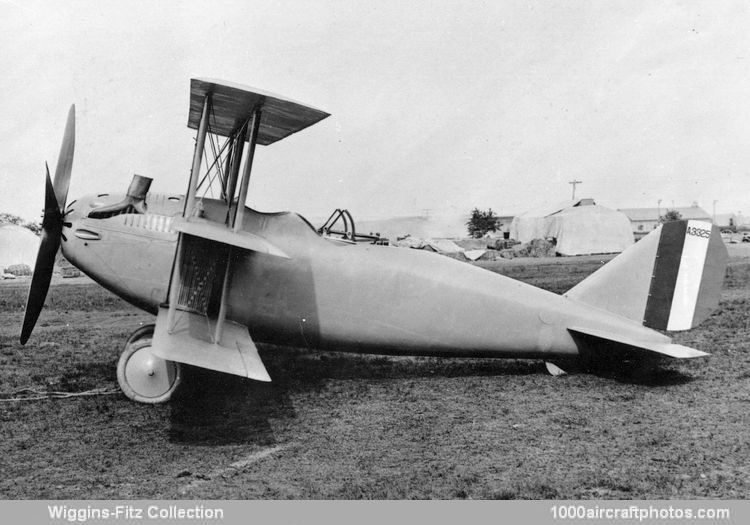The Model 18 was designed specifically for the 400 hp Curtiss-Kirkham K-12 engine, a liquid-cooled geared V-12 type of somewhat unorthodox construction developed late in 1917. The K-12 gave the Model 18 world-record performance in 1918 and evolved into the C-12 and eventually into the D-12 and the Conqueror.
The fuselage was a well-streamlined structure featuring a combination of previous Curtiss flying boat practice and German laminated wood veneer construction in a new process called Curtiss ply. The nose was kept as streamlined as possible by mounting the radiators on the sides of the fuselage. Armament was a pair of 0.30 in (7.62 mm) caliber Marlin machine guns on the nose, a pair of 0.30 in (7.62 mm) caliber Lewis guns on the rear cockpit Scarff ring, and a single Lewis firing out of the belly.
Kirkham chose the triplane configuration for his new fighter because the shorter span would enhance the maneuverability. The '-1' was added to the designation after alternate wings of longer span became available on the '-2' version. In all configurations, the Model 18T was known as the Wasp but, because of the sound of its wires during landing approaches, it was known around Garden City as Whistling Benny.
For its first flight, on July 5, 1918, the Model 18T had straight wings; tail heaviness was soon corrected by sweeping the wings back 5°. The Army became interested in the design and arranged to borrow the first one from the Navy. Tests with full military load in August 1918 produced a top speed of 163 mph (262 kmh), making the Model 18T the world's fastest aircraft at the time even though the record was not recognized. The Army then ordered two Model 18Ts of its own with Army serial numbers 40054 and 40059.
No Navy production orders were received for the Model 18T; its hand-built engine was more experimental than the aircraft itself and the end of the war killed any requirement for it as a Service type. The speed of the Model 18T-1 was put to good use, however, since the Navy entered both examples in postwar air races. Both were flown in the 1920 Pulitzer Trophy Race but dropped out because of engine trouble. As single-float seaplanes, both were entered in the 1922 Curtiss Marine Trophy Race.
A-3325 (painted green, Race No. 5) dropped out with engine trouble and A-3326 (painted yellow, Race No. 4) was in the lead when it ran out of fuel just short of the finishing line. As landplanes again, both were entered in the 1923 Liberty Engine Builder's Trophy Race for Service two-seaters. A-3325 crashed during a trial flight and A-3326 (Race No. 3) broke its crankshaft during the race and was destroyed.
The first of the two Army 18T-1s was delivered to McCook Field for static test in February 1919.
Since the Navy had no urgent need for both Model 18s after the Armistice, A-3325 was left at Garden City for further testing. A longer set of wings, with two bays of struts and a span of 40 ft 7.5 in (12.25 m), was fitted, creating the Model 18T-2 designation. On September 18, 1919, Curtiss test pilot Roland Rholfs set a new world's altitude record of 34,910 ft (10,640 m) with this aircraft. Fitted with floats, A-3325 also set a world's seaplane altitude record.
In 1919, Curtiss built a fifth Model 18T as a civil aircraft. Fitted with long wings, it was sold to Bolivia, where it became the first aircraft to fly from the capital city of La Paz at an elevation of 13,500 ft (4,115 m). After consistent performance there it crashed on May 19, 1921.
After introducing the Model 18T, Curtiss offered the same design with more conventional two-bay biplane wings and designated it Model 18B Hornet. This was known as Experimental 510 but was publicized as the Hornet. The Army ordered two in August 1918, with Army serial numbers 40058 and 40064. The first was delivered for static test in June 1919; the flight test aircraft crashed soon after delivery."
|
A |
18T-1 |
18T-2 |
18B |
